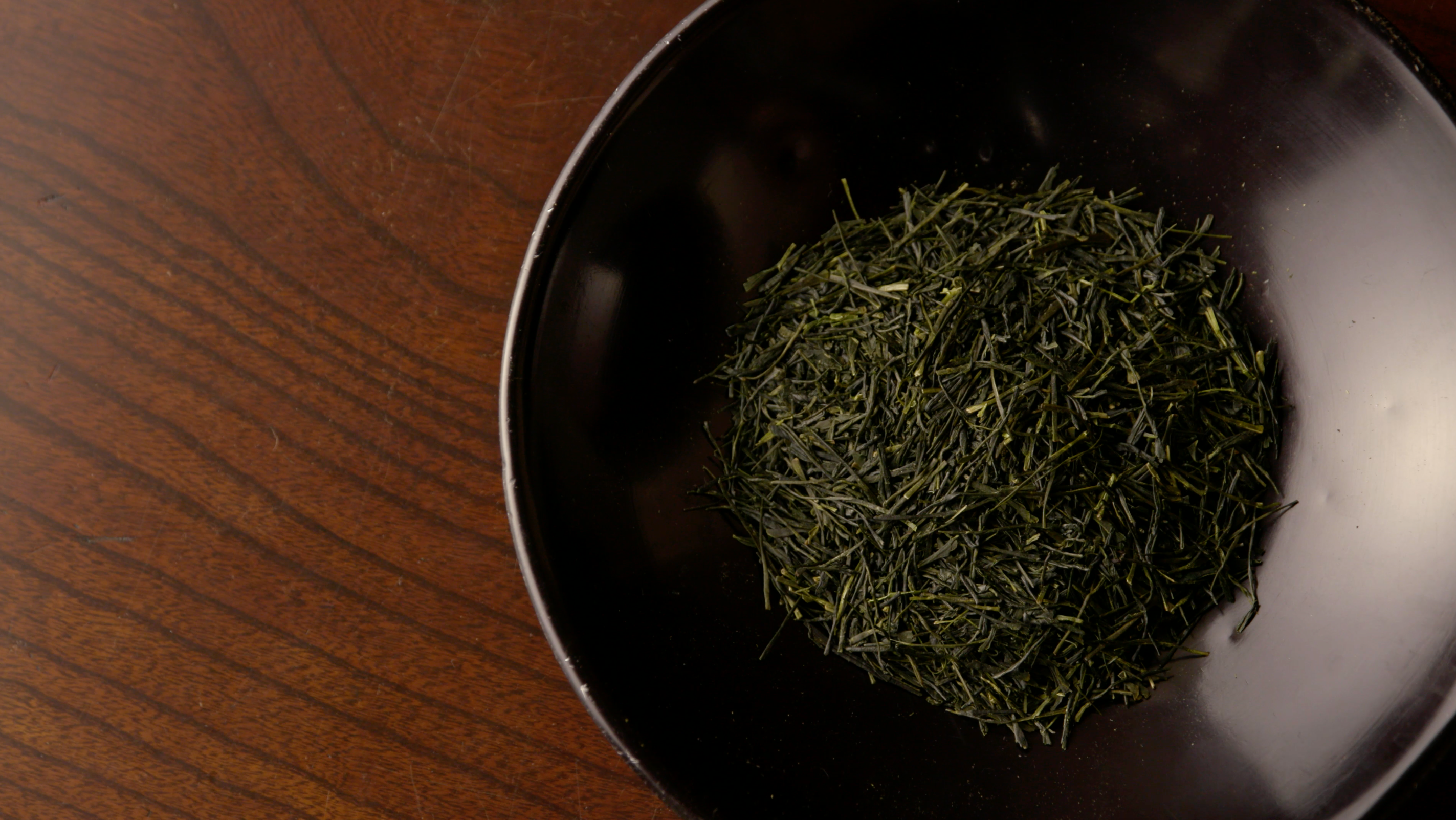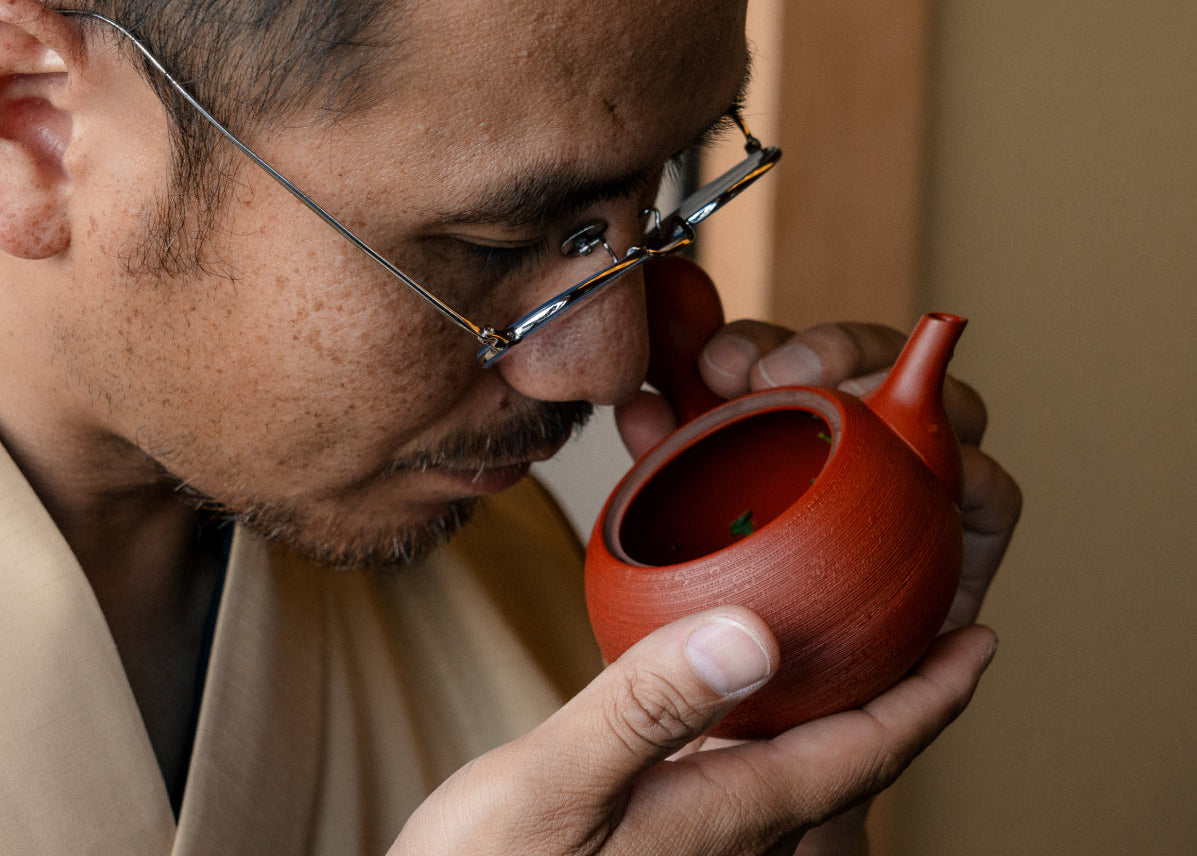

日本茶の風味に老化がどのように影響するか、考えたことはありますか?🌿
この記事では、私たちの茶師、モヘイによって説明された「後熟」(こうじゅく)という魅力的な概念、つまりお茶の熟成について掘り下げます。この伝統的な実践が日本茶の風味や香りをどのように変化させ、ユニークな体験を生み出すのかを学びましょう。
後熟(こうじゅく)は、中国語の漢字で「後」と「熟」を組み合わせて、茶の後熟または熟成のプロセスを説明します。新茶が初収穫の新鮮さを祝うのに対し、後熟は茶葉を熟成させ、時間をかけてよりまろやかで円熟した風味を引き出すことに焦点を当てています。この技法は何世紀も前に遡り、代々の茶の達人によって洗練されてきました。しかし、この技術は公にされておらず、今日まで知られていません。

光:日光にさらされると、お茶の品質が劣化し、鮮やかな色や新鮮な味が失われることがあります。歴史的に、お茶の葉はその品質を保つために、暗く涼しい部屋に保管されていました。
温度: 高温はお茶の劣化を加速させ、風味や香りの喪失を引き起こす可能性があります。お茶を保存する伝統的な方法は、涼しい場所に建てられた茶蔵に茶壺で保存することでした。(地震が頻繁に起こるため、人々は地下の貯蔵庫を建てませんでした)。
湿度: 湿気はカビを生やし、お茶を台無しにする可能性があります。一部の地域では、湿度レベルが自然にお茶の保管に最適ですが、現代の方法では理想的な条件を維持するために冷蔵設備を使用することが一般的です。
空気:酸素にさらされると、お茶が酸化し、風味や色合いが変わることがあります。お茶の瓶は、粘土や磁器などの材料で作られた密閉容器で、何世紀にもわたってお茶を大気から守るために使用されてきました。明治時代初期に木製や亜鉛メッキ鉄製のお茶箱が開発された後、お茶箱は茶葉の保管や輸送に使われるようになりました。今日では、お茶は複数の層を持つ頑丈な袋に詰められ、すべての空気を取り除くために真空密封され、その後段ボール箱に保管されます。
熟成茶は、精密さを必要とする芸術です。正しく行われると、茶はより丸みを帯びた成熟した風味を発展させます。しかし、上記の重要な要素のいずれかが制御されていない場合、茶は劣化し、望ましい特性を失う可能性があります。
光、空気、湿気から離れた冷蔵庫で9年間成功裏に熟成されたお茶は、その緑色と新鮮な香りを保ちます。それに対して、15年間不適切に保管された別のお茶は、白っぽいまたは赤っぽい色合いとカビ臭を示します。
熟成されたお茶を味わうと、フレッシュなお茶と比べて、よりまろやかで丸みのある風味を期待できます。熟成プロセスは粗い部分を取り除き、より滑らかで複雑な味わいを生み出します。
逆に、劣化したお茶は味が平坦で古くなり、元の鮮やかな風味が明らかに失われます。
一部の茶の専門家は、熟成されたお茶の味わいを、ヴィンテージワインを味わうことに例えています。時間の経過が飲み物の複雑さと深みを増すのです。

劣化したお茶の落とし穴を避け、熟成されたお茶の利点を楽しむために、自宅ではお茶を暗い場所に保管してください。高温を避け、涼しい環境でお茶を保管し、乾燥した場所に保管することで湿気を防ぎます。最後に、できるだけ空気に触れないように、密閉容器を使用して保管してください。
私たちのお茶の保存ガイドライン の記事を読んで、ベストプラクティスと容器の比較を確認してください!
新茶から熟成茶への旅は、日本の茶文化の深さと複雑さを反映しています。新鮮な茶と熟成された茶はそれぞれ独自の魅力を持っており、その違いを理解することで、茶を飲む体験をより豊かにすることができます。適切な保存と熟成により、あなたの茶は豊かで複雑な飲み物に変わり、日本の茶の芸術性を独自に垣間見ることができます。
熟成茶の世界を探求し、Kojukuが提供する独特の風味と香りを体験することをお勧めします。楽しいお茶の淹れ方を楽しみながら、Moheiの茶の世界を旅してください!日本茶の豊かな伝統と多様な風味についてのさらなる洞察をお楽しみに。Tea Master Moheiからの最新情報や独占コンテンツを得るために、私たちのソーシャルメディアチャンネルをフォローしてください。